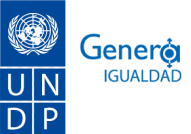Background on Social protection:
Social protection is an important contributor to economic growth through two main channels. Firstly, it improves access to healthcare, education and social protection of incomes. It helps to ensure a country’s productive potential, by increasing participation in the labour market and entrepreneurial activity, while at the same time it contributes to the structural transformation of the economy by the reallocation of economic resources in all sectors. Secondly, social protection as a stabilizing factor in times of economic crisis, supporting aggregate demand, maintaining purchasing power of the minimum wage, and preventing unemployment by accumulating human and productive capital developed by countries. In addition, income transfers, for example, help to stimulate consumption in communities and in households by maintaining aggregate demand, and constructing the capacity for recovery and avoiding risks of relapsing into poverty and social exclusion during the crisis.
Social protection policies are based on a wide range of public and community instruments that can be both contributory, which includes all the branches of social security that are designed to provide the working population with protection against present or future contingencies and non-contributory, a set of State cash-transfer and subsidy programmes, that is funded by general income taxes under the principle of solidarity.
These instruments include, for example, social insurance for standard and non-standard forms of employment and self-employment, safety nets to safeguard the fulfilment of basic needs, cash transfers in kind and monetary form (for example as long-term support within social protection systems, or as a key component in scaling up social protection provision and coverage in the event of large-scale emergencies, or household- and community-level shocks), as well as work-related protection like pension schemes or maternity/parental coverage.
Existing programmes in countries such as Argentina, Cabo Verde and China have contributed to promote equality of opportunity through the development of universal or nearly universal pension schemes; Uruguay and Ukraine have achieved universal maternity coverage, advancing on gender equality; and theNetherlands and Colombia have adopted measures to lower legal minimum thresholds on working time or earned income and to facilitate coverage for workers with multiple employers in order to support the transition from informal employment to formal employment, addressing some of the challenges the new world of work entails. In Zambia’s the Child Grant Programme (CGP) led to a 34 per cent increase in the area of worked land as well as an increase in the use of agricultural inputs, including seeds, fertilizers and hired labour. The growth in input use led to an approximately 50 per cent increase in the value of overall production, which was primarily sold rather than consumed on the farm. In both Kenya and Malawi the cash transfer increased the share of family food consumption obtained from home production.
However, a lesson learned from existing well known programmes in countries show that addressing gender inequalities within the household and outside does not happen automatically, as programmes have embedded bias that discriminate against women by ignoring, for example, the sexual division of labour and women’s unpaid work. Thus, identifying gender gaps that national social protection systems should address is a critical component of the design of these programmes. Furthermore, they need to include actions to reduce women’s unpaid care work and promote co-responsibility with the state and the community. This requires calculating and taking full account of the economic and social cost of reproduction and of caring for dependents, and establishing social security as a universal human right – and not just a prerequisite of the labour market or welfare programmes.
We believe it is necessary to reconceptualize social protection, starting with the construction of national social protection floors that promote national strategies guaranteeing minimum access to services and to income security for the population at large. It is a the starting point for successively expanding social security both horizontally (more beneficiaries) and vertically (more guarantees). The Social Protection Floor, according to the context, may comprise a broad range of age- and gender-sensitive social security programmes: early childhood development programmes, pregnancy and maternity benefits, family allowances and parental care services for minors and dependents, reproductive health (including maternal and infant health services), food support, access to life-saving medication, as indispensable components of social security.
Last March, the 63rd session of the Commission on the Status of Women (CSW) concluded with a statement that recognized the progress made in the access of women and girls to social protection, public services and sustainable infrastructure, particularly in the fields of health and education. Despite this, it also stressed the importance of not reversing levels of protection already achieved, and highlighted that in most contexts this progress is likely to be affected by budget cuts and austerity measures that leave the most vulnerable exposed.
UNDP has been an important partner to national and local governments in efforts to articulate and implement social protection for sustainable development. The cross-sectoral scope of UNDP´s work has positioned it as a key player in advancing policy dialogues concerning social protection, generating evidence and bringing together relevant actors. UNDP has played an central role in extending social protection programmes, reforming them, fostering innovation, transferring know-how across countries and working closely with traditionally excluded communities to ensure that their voices are represented and their needs addressed.
UNDP has also, historically, supported national, regional and global initiatives and policy development on social protection and poverty eradication from a gender perspective, reviewing and analyzing programmes, designing models for governments to consider and proving costing models to facilitate their adoption. The objective of this consultation on social protection and unpaid care work from a gender perspective is to collectively learn from different UNDP’s and partners’ experiences and engage in a constructive debate about how our agency can advance into gender sensitive social protection systems.

